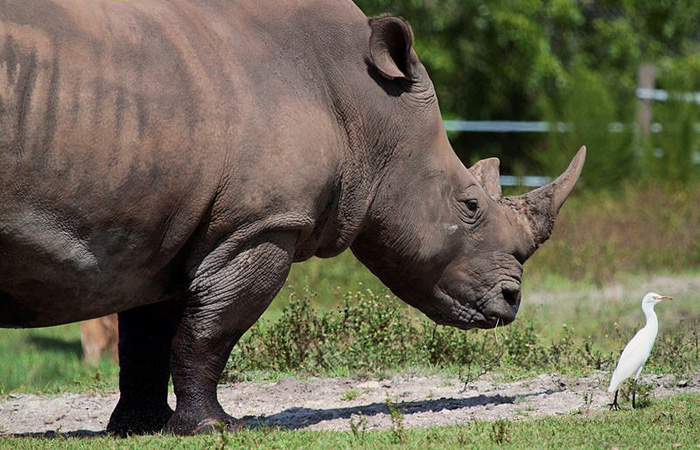Rethinking Lifestyle
Extinctions

A news item last week was that the last male Northern White Rhino has died. Although there are two females of the same species remaining, procreation demands a male as well as a female. This marks the end of the species. Species extinction. I found the accompanying commentary noteworthy. The commentary: “The Northern White Rhino DNA has been preserved.” The obvious implication was that the extinction is not so serious, because technology, yet, will solve this problem. In my opinion, a more appropriate comment would be: “Here is yet another extinction. What’s next?” This particular extinction may not affect us here in southern Manitoba, but which one will?
It brought to mind the Prairie Organic Conference I attended a month ago. Jonathan Lundgren, PhD, an entomologist, formerly with the US Department of Agriculture, but now running his own private lab, reminded us that unless we change the way we raise our food, Monarch butterflies, honey bees and barn swallows could be next on that list. The probable culprit: neonics, or neonicotinoids, the nicotine derived insecticides, that first came into use in 1994, and have now become the most commonly used insecticide in agriculture.
How many readers can remember when we needed to stop our cars in order to clean insect guts off our windshields? How many readers can remember a time when barn swallows were common? Or Monarch butter flies? Now think. When is the last time you have had to stop to clean your windshield because of insect guts? Indeed, when is the last time you have seen a barn swallow or a barn swallow nest?
So what’s going on? Well, it seems, one way of answering that question is to say nobody knows for sure. True, that’s the nature of science: nobody can say with certainty that this causes that; that the use of neonics in our food system is killing our barn swallows – or our honey bees. But let’s see what we do know.
This essay will only examine one case study. Let’s look at Monarch butterflies. In 2017 13% of all terrestrial land in the US was seeded to neonic treated seeds. Scientists know that less than 20% of neonic applied to the seed is taken up by the plant. What happens to the other 80%? No one knows, it seems. We know that Monarch butterflies depend on milkweed for food. With increasingly efficient weed control, the number of available milk weed plants is decreasing. So Monarch butterfly habitat is decreasing. But that’s not all. It now emerges that if a field is seeded to neonic treated seed, neonics will be detected in milkweed plants adjacent to that treated field soon after, and not long after that further away yet. How did it get there? It seems no one is certain, but it is there, and in sufficient quantities to be lethal to the butterflies.
If the use of neonics has this effect on butterflies, how does this affect honey bees. Again, no one knows for sure. There is no smoking gun. Nevertheless if we do not soon discover what is killing our honey bees, we may be headed for a very big problem. We depend on honey bees and other insects to pollinate many of our food plants! Surely it would be wise to curtail our use of neonics before their use has diminished our pollinating insect population to the point where our food supply is threatened – even if the net result is that our food becomes more expensive.
We may wish to push this problem onto our farmers. That won’t do. Those of us whose involvement in the food system is limited to buying and consuming food, make a statement about our priorities every time we purchase a food item that has been raised using neonics. We are saying that we support this way of producing food. But there are alternatives. There is good reason we all should be more conscientious in the choices we make when we purchase our food.




